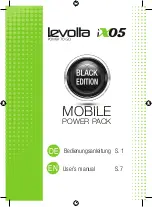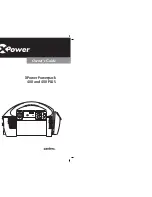
5
OVERHAUL
(see Parts List)
The disassembly and re-assembly procedures can
be accomplished by following the instructions and
drawings on pages 8 and 10.
Use extreme care
during disassembly and reassembly not to
mar, nick or burr any smooth surface that
comes in contact with O-rings.
Before installing
O-rings, be sure to apply an O-ring lubricant such
as Lubriplate® 630A, or equivalent.
It is recommended that special assembly tools,
which can be ordered under part number
G701/G704KT,
be used to overhaul this tool.
Virtually all of the moving parts in the tool ride on
O-rings, protected by back-up rings where high
pressure dictates. This means no metal-to- metal
wear. By use of close tolerances and low micro-inch
surfaces against which the O-rings seal, a long tool
life can be expected before any overhaul becomes
necessary. At that time, complete overhaul can be
achieved by the use of
Service Kit G83KS
which
contains a complete set of O-rings, back-up rings,
screws, washers and gaskets.
Not shown, but included: 701A67 Seal
Guide, 702B62 Power Cylinder Tool, 703A53
Seal Guide, 702A64 Seal Guide.
A I R V A L V E
To disassemble:
Disconnect riveter from the air source.
Remove retaining ring (12) and muffler (11). Insert a valve plug extractor (P1178) or 5/16-18 threaded rod or bolt into end of valve plug
(10) and pull it out. Using the same procedures, pull out spool assembly (72).
NOTE: It should never be necessary to remove valve sleeve (3) unless the ports become plugged from contaminated air.
If it is suspected that the ports are plugged, use needle nose pliers to grasp end of spring (4), turn clockwise and pull
to dislodge from groove in handle. With spring removed, valve sleeve (3) can be pulled out using an 837B700
valve sleeve removal tool.
To re-assemble:
Reverse the above procedure making sure that all O-rings are properly lubricated. To avoid damaging the O-rings (2), carefully install
sleeve (3) with your fingers. Gently push and wiggle sleeve to allow O-rings to slip past inner ports. Spring (4) is best installed using tool
836B700 to push the large diameter coil into the groove. Caution: the riveter cannot operate if the spring is not anchored firmly.
H E A D S U B - A S S E M B L Y
Always remove the complete pulling head from the tool before attempting disassembly of the head assembly.
Remove end cap (60). Push against threaded end of head piston (54) and slide it out of head cylinder (51). Be careful not to
damage threads or cause burrs on polished piston rod surface.
O-ring (52), back-up rings (53) then O-ring (57), back-up ring (58) can be removed using a bent hook.
If the head piston does not return fully forward after the tool has been fully overhauled although it is properly bled, it may be
necessary to remove and service the pressure relief valve sub-assembly (74).
Remove the pressure relief valve sub-assembly (74) from the head cylinder (51). Remove the O-ring (48) from the head
cylinder (51). If damaged, replace. Carefully unscrew the ball seat (45) from the spring seat (42) using soft jaws. The threads
of this part have had Loctite
®
242 applied. When all components have been removed, clean and dry thoroughly. If the spring
(43) appears to have a “set”, replace it. This pressure relief valve should hold 1200 psi (82.7 bar) before opening.
To re-assembly reverse the above procedure. Apply a small amount of Loctite
®
242 on the smaller thread size of the spring
seat (42). Allow 30 to 60 minutes for the Loctite
®
to cure. Before installing the valve sub-assembly back into the head cylinder,
make sure the O-ring, (48) is seated concentrically inside of the valve cavity.
Always lubricate all O-rings with Lubriplate® 630A. The re-assembly sequence is the opposite of disassembly. This includes filling
the handle (1) with oil before replacing gasket (70) and O-ring (69), just prior to replacing the head sub-assembly onto the handle.
Tighten the four socket head cap screws (71) uniformly to prevent leakage around the gasket. When assembled, purge system of
air by following the “Fill and Bleed instructions” on page 4.
T H E G 7 0 1 / G 7 0 4 K T T O O L K I T






























